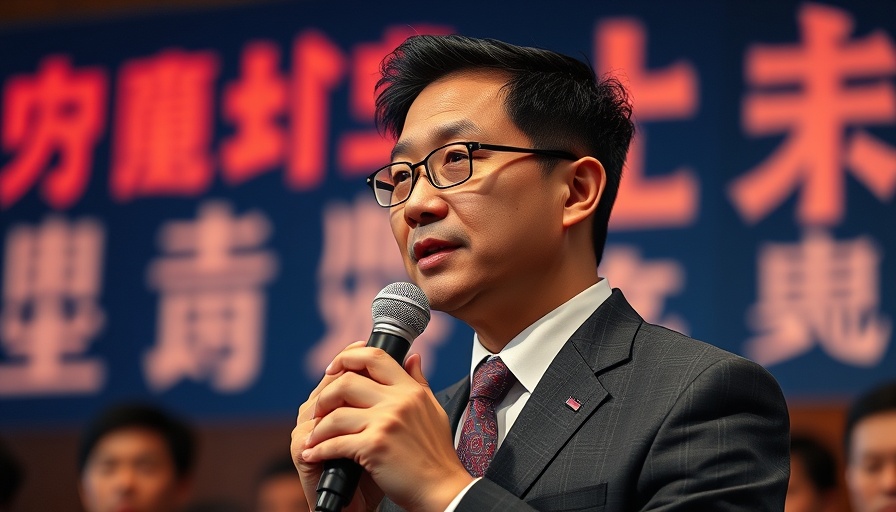
Understanding Taiwan's Tariff Situation
In a significant move that could shape international trading relationships, Taiwan’s President Lai Ching-te has addressed the controversial 20% tariff rate imposed by the Trump administration on goods imported from Taiwan. During a press briefing, he clarified that this rate is considered "temporary" and emphasized the island's commitment to negotiating a more favorable figure.
President Lai's statements signal Taiwan's recognition of the importance of strong economic ties with the U.S. particularly in the high-stakes arena of technology and semiconductor production, which forms the backbone of the island’s economy. As global demand for electronics continues to rise, not only for everyday consumer goods but also for cutting-edge technologies like 5G and AI, Taiwan aims to position itself favorably in the international market.
The Broader Economic Implications
The 20% tariff not only impacts prices for Taiwanese goods in the U.S. but also serves as a focal point for ongoing tensions in U.S.-China relations. Taiwan's strategic position as a leading semiconductor manufacturer makes it integral to supply chains that drive the global economy. Any prolonged tariff could potentially drive investors and businesses to reassess their strategies, prompting many to consider the implications for stock market investment, particularly in sectors like technology where Taiwan excels.
This situation calls for a nuanced investment strategy, as investors need to consider factors such as tax-efficient investments, portfolio diversification, and asset allocation strategies. Learning about both international investing opportunities and the economic indicators influencing these tariffs can equip investors with significant insights to navigate market volatility.
Potential for Tariff Reduction: What Could It Mean?
Negotiating a reduction in the tariff rates holds particular significance not just for Taiwan but for investors globally. A lower tariff could lead to more favorable trading conditions, resulting in price reductions for consumers. This environment typically encourages spending, which can ultimately boost stock market performance. Investors should keep a close watch on these negotiations, paying attention to how such changes could affect sectors reliant on Taiwanese-produced goods.
For example, tech giants and manufacturers heavily reliant on semiconductor supply may experience fluctuations in their stock prices based on tariff negotiations. Learning about stocks with strong growth potential in this context, classified under growth stocks, can significantly impact an investment strategy.
Addressing the Concerns Around U.S.-China Relations
The diplomatic landscape between the U.S. and China remains fraught with tensions that could affect the tariff negotiations. Current geopolitical dynamics necessitate a thorough understanding of risks associated with international investing. While investors often focus on domestic financial strategies, taking a global perspective—particularly involving emerging markets and investment in technology stocks—becomes increasingly relevant as international policies unfold.
Critical considerations also include managing risk and understanding how factors such as inflation protection investments and sector-based investing can influence overall portfolio performance. A diversified approach may allow investors to mitigate potential losses stemming from geopolitical strife.
Conclusion: Navigating the Future of U.S.-Taiwan Trade Relations
As Taiwan works to negotiate lower tariff rates, the long-term outlook for U.S.-Taiwan trade relations remains promising. Investors must remain vigilant about the evolving economic landscape, staying informed about stock market trends and stock picking tips to enhance investment strategies. By understanding the implications of these tariffs on the broader economy, investors will be better prepared to make educated decisions for their portfolios.
 Add Row
Add Row  Add
Add 



Write A Comment